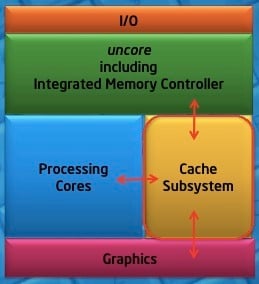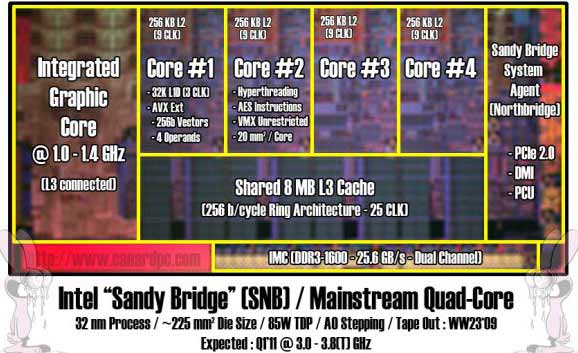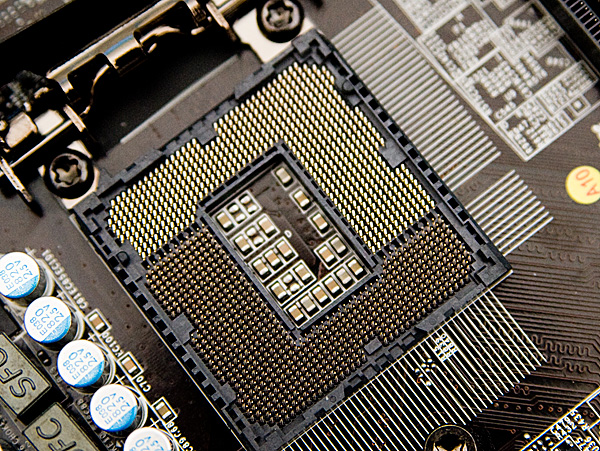Intel’s latest line of processors, code named “Sandy Bridge”, was designed with intense multimedia demands in mind. Although we won’t likely see a sandy bridge chip on the market until early 2011, we have learned a good deal of information in regards to the architecture of the processor.
The greatest leap in design is the debut of silicon that is devoted to transcoding data. Think data conversion. An everyday example would be the transcoding of audio and video data when playing a media file that requires a special codec (QuickTime, DivX, i.e.) for playback or converting something between two formats, be it for your iPod, or PSP, for example. The current “Nehalem” processor lineup is wonderful, but having dedicated CPU power for playing media should create a notable difference in the overall, modern PC user-experience. Intel has also crammed a GPU into the Sandy Bridge, another first for the company. It will sit on the same silicon wafer as the main processor, no small feat in and of itself, through the advent of the miniscule 32 nanometer transistor manufacturing process. The smaller measurement brings cooler temps and greater space efficiency to the design table. The GPU and transcoding functions will be backed by new processor instructions for handling media, dubbed Advanced Vector Extension, or Intel AVX for short.
Even though the Core i3, i5, and i7 processors cut the mustard, consumer interest in upgrading PCs has leveled out. This is the perfect time for a dramatic shift in CPU design and Intel’s CEO Paul Otellini recognizes the opportunity at hand, as heard during a conference call last month. "Due to the very strong reception of Sandy Bridge, we have accelerated our 32-nanometer factory ramp...to enable us to meet the anticipated demand”.
[ CNET ]





